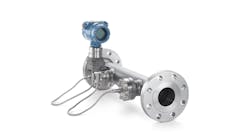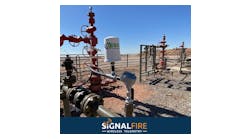By Matt Migliore
Wireless technology holds great potential for many fluid-handling applications, as evidenced by the number of wireless-enabled devices currently coming to market. And at the heart of the industrial wireless movement are the widely publicized standardization efforts – i.e., WirelessHART and ISA100 – both of which promise to enable more widespread adoption of wireless systems. While there has been much debate about how WirelessHART and ISA100 will share the playing field in the wireless segment, recent developments signal both initiatives will serve prominent roles in wireless fluid handling systems going forward.
WirelessHART Status Update
In March 2009, Flow Control magazine reported on nascent applications of WirelessHART ("The Wireless Standard(s)," Flow Control, Vol. XV, No. 3, pages 6-10). Since the publication of that report, the HART Communication Foundation’s WirelessHART specification has achieved several significant milestones and has received additional uptake from end-users in real-world application scenarios.
Following an extensive field test undertaken by Royal Dutch Shell and others, some small, non-fatal flaws were revealed. The ISA100.11a working group is currently updating the specification to incorporate the modifications necessary (mostly editorial) to clarify those areas exposed during the field-test phase. The timeline for release of the revised ISA100.11a standard is still being derived at the time of this writing, but is expected before the end of the 2010 calendar year. Subsequent submission to the American National Standards Institute (ANSI) and IEC will follow immediately thereafter.
In addition to ISA100.11a, several ISA100 subgroups are working toward completion of a number of other standards, recommended practices, and technical reports. Active subgroups with near-term (within one year deliverables include:
• WG 16 – Factory Automation Working Group (ISA100.16)
• WG 14 – Trustworthy Wireless Working Group (ISA100.14)
• WG 21 – People and Asset Tracking (ISA100.21)
• WG 15 – Wireless Backhaul Backbone Network (ISA100.15)
• WG 18 – Power Sources (ISA100.18)
• WG 17 ZigBee (ISA100.17)
• WG 12 – Convergence Subcommittee (ISA100.12)
Industrial Wireless from Concept to Reality
Following a few years of discussion about the promise of standards-based wireless systems, there has been a lot of news of late about real-world applications of wireless.
"Today there are many solutions for wireless technology," says Ed Ladd,
director of technology programs for the HART Communication Foundation. "The best option is to utilize a standard, but even then, not all applications will be served by a single standard. Keep in mind, those that try to be everything to everybody tend to fall short and do nothing for anybody."
As such, Ladd says end-users should evaluate wireless options based on the application, the need, and the technology capability. Although standard implementations are typically the best option, Ladd says there may be proprietary
solutions that, based on the application, would be suitable, cost-effective and provide real benefits.
Regarding the interplay of multiple wireless standards, Ladd says he believes a single-source wireless standard is an unrealistic option at this point. "There have always been multiple standards – 4-20mA, 10-50mA, 1-5vdc; HART, FOUNDATION Fieldbus, PROFIBUS; 802.11a/b/g/n, 802.15.4; WirelessHART, Zigbee, ISA100.11a," says Ladd. "Multiple standards have been available for many years and can promote advances due to competition. One standard would be ideal, but I don’t think it is necessary for advancement of the technology."
Wayne Manges, co-chair of the ISA100 Committee and a program manager for the U.S. Department of Energy’s Industrial Technologies Program, doesn’t necessarily believe a single wireless standard is in the best interest of the end-user community. "I am not convinced that a single wireless standard is at all desirable," says Manges. "Many end-users have expressed their opinion that a single wireless standard could stifle innovation and end up adding significant costs in the long term."
Manges cites the cell phone as a good example of a technology that leverages multiple wireless standards to an effective end. "Suppliers have already demonstrated approaches that can allow multiple wireless protocols, including WirelessHART and ISA100.11a, that appear to the end-user as a single standard at the application layer," says Manges. Further, he says the ISA100 initiative itself expects to supply multiple protocols (ISA100.15, ISA100.21, etc.) under the ISA100 umbrella. "These protocols will interoperate at some level – likely at the application layer – but not at the physical (radio) level," says Manges. "The technology is moving too rapidly to try to lock into a single standard at that level in the protocol."
What Does the Future Hold?
Going forward, Ladd says WirelessHART figures to continue to gain technology support. "For fluid handling, I see high-speed nonbattery-powered wireless devices," says Ladd. "For flow, [however], you need continuous communications, and many of the devices require more power to operate than a battery can provide long term. That is not to say you won’t have batteries in flowmeters, but that there will be more options based on application need."
Ladd sees wireless finding a home in skid-mounted flow applications, particularly portable ones. In addition, he sees wireless continuing to gain support for those applications that are hard to reach with signal wiring.
From an ISA100 perspective, Manges says end-users can look for the ISA100 initiative to extend the application domain beyond the process automation market. "We have seen interest for ISA100 versions for smart grid, commercial building automation, transportation, and other ‘industrial’ sectors beyond the current process applications," says Manges.
Matt Migliore is the editor in chief of Flow Control magazine. He can be reached at [email protected].



